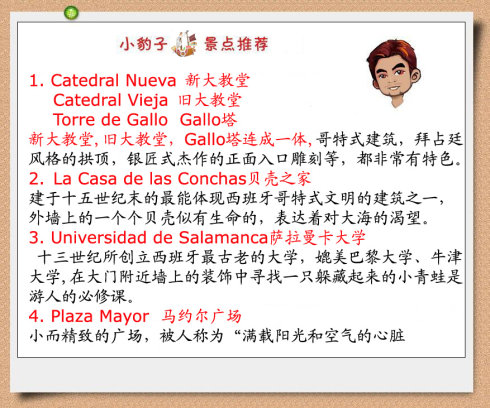convento de santa teresa
4A地址: 暂无
开放时间: 暂无

更多热门城市
景点印象
This is a must for anybody who has an interest in the life of St Teresa, as you get to see her humble beginnings. The church itself is nothing special, but the museum to the side contains her relic.For those who are not followers of the Saint, you get and average church and a gruesome 500 year old finger to look at.
I was very excited to see the birthplace of St. Teresa and was happy that the Convent was our first stop. However, the museum is small, you cannot take pictures and did I mention it was small. The relics they have are nice though not all are St. Teresa's. The church next door is not always open, but we lucked out and were able to go in very quickly during Mass.
When we went inside the church, we were a bit dissapointed as it was a relatively simple church by Spanish standards. Then we saw the side chapel which was jaw droppingly beautiful. Having been to a school dedicated to St Teresa and knowing her significance in church history just added to the whole experience.
Side chapel quite beautiful.Museum (1 room) holds the relic of St Theresa - the kids all wanted to see this!Visited as our family has a special affection for St. Theresa.Worth a trip.
This will appeal to any who share an interest in Teresa, her indomitable reforming spirit, her Feminism and her Mysticism. She is globally recognised, and these are her humble roots.
Really worth a visit. free entry. beautiful gold alter and stained glass windows inside and lovely from the outside when illuminated at night.
Small church, very beautiful and peaceful. If your a lover of churches and architecture, you will like it.
The Convent and Church of St Teresa is certainly worth a look if you travel to Avila. That trip is easily done as a day trip (by organized tour or on your own) from Madrid. What you see is not so much the convent, but the church of St Teresa, built in the 17th century on the spot where the saint lived, one hundred years before. The church itself is not particularly notable (the lavishly decorated side altar mentioned in some guide books, was closed for our visit), and the museum is one tiny room whose outstanding feature is a rather grizzled relic, the finger of St Teresa, though I suppose that as it's nearly 500 years old (she was born in 1515) it has held up rather well. The ring she wore is still on the finger, and that has held up even better!While there is little extraordinary about the site, there was much extraordinary about St Teresa, who reformed the Carmelite order, who was given to religious ecstasy, and who created convents all over Spain. There is a statue in the church that shows a fairly ecstatic St Teresa, but I must confess that if you want to see her in ecstasy, you should visit not Avila but Rome, where the great sculptor Bernini's statue of the saint in ecstasy, has captured the mood about as well as can be imagined!
A beautiful little church and a museum. But really, I'd say this is about connecting to the life of a remarkable woman. Read up on her and meditate to connect with her when you are in the church (if that is your thing).
The Convento de Santa Teresa is within the impressive walled city of Avil in Castilla y Leon in Spain. St. Teresa was born in th city and the convent is built on the site of her home She ran away from home as a young girl hoping to be martyred by the Moors but was caught by her uncle the site of which is the best view of this magnificent medieval walled city especially at nightfall. The unfinished cathedral is built into the city wall and is built like a castle with very thick walls. There are many churches buil in the city with a history of St Teresa but she lived for a long time within a monestry outside the city walls and there is also a cake named after her. The church of St. Vincente has the tomsb of the saint and his sisters who were martyred and it bears the discription of their martyrdom. The monastry of St. Thomas has the tomb of Torquemada the head of the Inquisition as well as many royal tombs. The old city is entered through one of the many gates within the walls, although you can drive through parking is very difficult. Many of the roads are built of stone and some are very narrow which can be difficult when vehicles are trying to get through. We were lucky to be taken to the city by friends who live some 10k into the countryside and knew many of the places of inerest and I can thoroughly recommend this magnificent walled city, which has more history than be described in this article. There is a very good tourist information office with a lot of literature in many languages. Cafes and restaurants tend to be more expensive here than in the modern town. Would also recommend visiting in either Spring or Autumn as it was very hot in Summer and has deep snow in Winter.
A very tasteful reminder of Santa Teresa de Ávila - the church is beautiful and so peaceful. The only reason for visiting Ávila.
it is said that saint teresa was born in this convent and grew up here.it is a very large, beautiful building built inside the old city walls.
Easy to walk around. Lovely room where Teresa was born. Interesting relic room, look out for her ring finger which Franco kept by his bed every night.
Helpful english translations at most of the areas of the Church gave useful information as to the meaning behind each of the paintings/ stained glass/altar etc... Has a lot of historical and spiritual meaning.
We visited this church as part of a day tour from Madrid.The stained glass windows were so beautiful!!!! and the church is pretty. The finger of the saint is not in the museum (EUR2.00pp), but is kept at the inner room of the souvenir shop. The museum is to the left of the front of the church along a street, while the souvenir shop is to the right of the main entrance of the church - it's not that easy to find hence my garbled directions!!!.. The church has a lot to see and the area including the square at the front is very charming!!!…

